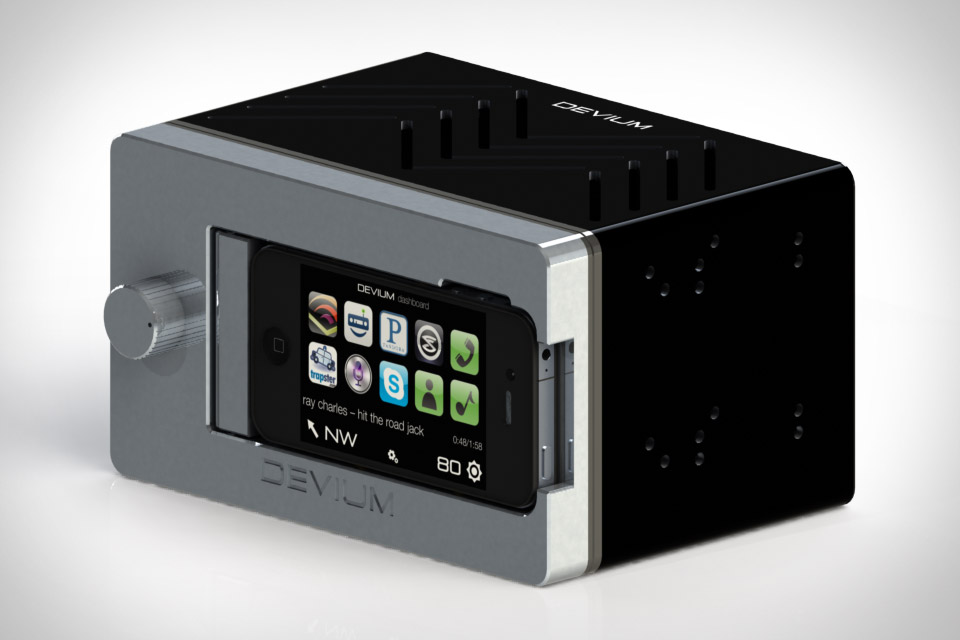
Yep, I had just graduated with my MBA and almost $100,000 of student loans. I was an entrepreneur and didn't want to settle for any of the job offers I was getting. Plus, I had made some money with my first 'startup' in the auto industry while in undergrad. I told myself, "I got this!"
Kickstarter was just becoming 'a thing' and I was browsing for cool ideas that I could help support. I found one called Devium, and it seemed like it was on it's way to hit it's funding goal of $40,000!
The backstory (and honeymoon phase)
I pinged the Founder, Paul, and didn't hear back. I followed-up a few times and finally got a meeting with him. The second time we met I put in some capital to become the 2nd co-founder!
We went on to way past our goal and raised $70,000+ on Kickstarter of pre-orders. We were featured in Time, Uncrate, and dozens of other publications. We were feeling ecstatic. I had said no to traditional job offers and truly believed I had found the next hot startup that was going somewhere, and I got in at the ground floor.
That was in early 2012.
I'm writing this in late 2016, and it's been years since I talked to any of the 'co-founders.' Last communication that I remember was in early 2014.
Did Ï mention that I was the one working alongside the CEO to raise over $200,000? That came predominantly from my network by the way.
What started the failure of this startup?
Going into Q3 of 2012, we had closed our kickstarter with about 260 pre-orders, massive amounts of press, hundreds of thousands of dollars of funding, and more cofounders than just Paul and me.
I was still feeling really excited that we were going to raise even more funding, and start going big places.
However, since I was less experienced than some of the other co-founders, I ended up being managed by one of the directors. I found myself writing Standard Operating Procedures before we started talking about how we were going to fulfill our pre-orders. Hmmph.
1a. Management Problem: Too many cofounders
Writing the Standard Operating Procedures is just one example of what happens in a startup that has too many cooks in the kitchen.
We had the finance guy, the management guy, eventually the young gun engineer. We had the CEO who should have remained an engineer and the other wealthy cofounder that should have been an investor instead.
Lesson #1: Now, after being in the startup space for 6 years, I highly recommend startups to have 1-4 cofounders. Others argue in between 2-4 cofounders is best. But Handshakin' is growing more and more each month, and I don't have a partner to have to worry about when it comes to making decisions. I'm either right or I'm wrong. #teamsolofounders
1b. Management Problem: Founder didn't quit his 9to5
Paul had put over $30,000 into this idea, had this beautiful video about Dash, and has a great energy about him. However, when the founder doesn't quit his job, there's not a sense of urgency that most successful startups have.
I was in the minority of people working full-time on it, even though I was just starting to get into my own real estate company simultaneously. Whatever, I didn't have a boss and was passionate about the startup. Paul should have quit his job and given this startup a fair chance, but he never thought the timing was right. And what do you know, the timing never was going to be right...
Lesson #2: Cofound companies with others who quit their full-time job and commit to the pursuit of the startup. Sure, Paul was using his paycheck to help fund it, but sure, he'd get his paycheck each month in case it didn't work out.
2. Feature Creep
Have you heard of this? It's basically what happens to your average ADHD entrepreneur. "Oh, our customers want bluetooth? Let's add it!!
"Oh we can add remote start easily with Dash, let's do it!"
"We can add inputs for subwoofers."
"We can add a button that starts your Keurig inside your house for tomorrow morning from your car!"
Okay, we didn't really think of that last one, but you get the idea, right? It's when you constantly add features instead of delivering your Minimum Viable Product (MVP).
Lesson #3: Don't freaking do that. Get the minimum out, do the least amount of work, spend the least amount of money. Make sure it works. Then use feedback to decide what to improve. Be humble.
If you're looking to find the startups that have the truly motivated founders behind them, help them find you with a strong personal brand.
Learn how our personal branding packages can help you impress more entrepreneurs.
Originally posted at www.handshakin.com.






